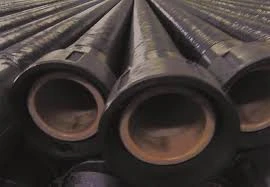
-
 Afrikaans
Afrikaans -
 Albanian
Albanian -
 Amharic
Amharic -
 Arabic
Arabic -
 Armenian
Armenian -
 Azerbaijani
Azerbaijani -
 Basque
Basque -
 Belarusian
Belarusian -
 Bengali
Bengali -
 Bosnian
Bosnian -
 Bulgarian
Bulgarian -
 Catalan
Catalan -
 Cebuano
Cebuano -
 China
China -
 China (Taiwan)
China (Taiwan) -
 Corsican
Corsican -
 Croatian
Croatian -
 Czech
Czech -
 Danish
Danish -
 Dutch
Dutch -
 English
English -
 Esperanto
Esperanto -
 Estonian
Estonian -
 Finnish
Finnish -
 French
French -
 Frisian
Frisian -
 Galician
Galician -
 Georgian
Georgian -
 German
German -
 Greek
Greek -
 Gujarati
Gujarati -
 Haitian Creole
Haitian Creole -
 hausa
hausa -
 hawaiian
hawaiian -
 Hebrew
Hebrew -
 Hindi
Hindi -
 Miao
Miao -
 Hungarian
Hungarian -
 Icelandic
Icelandic -
 igbo
igbo -
 Indonesian
Indonesian -
 irish
irish -
 Italian
Italian -
 Japanese
Japanese -
 Javanese
Javanese -
 Kannada
Kannada -
 kazakh
kazakh -
 Khmer
Khmer -
 Rwandese
Rwandese -
 Korean
Korean -
 Kurdish
Kurdish -
 Kyrgyz
Kyrgyz -
 Lao
Lao -
 Latin
Latin -
 Latvian
Latvian -
 Lithuanian
Lithuanian -
 Luxembourgish
Luxembourgish -
 Macedonian
Macedonian -
 Malgashi
Malgashi -
 Malay
Malay -
 Malayalam
Malayalam -
 Maltese
Maltese -
 Maori
Maori -
 Marathi
Marathi -
 Mongolian
Mongolian -
 Myanmar
Myanmar -
 Nepali
Nepali -
 Norwegian
Norwegian -
 Norwegian
Norwegian -
 Occitan
Occitan -
 Pashto
Pashto -
 Persian
Persian -
 Polish
Polish -
 Portuguese
Portuguese -
 Punjabi
Punjabi -
 Romanian
Romanian -
 Russian
Russian -
 Samoan
Samoan -
 Scottish Gaelic
Scottish Gaelic -
 Serbian
Serbian -
 Sesotho
Sesotho -
 Shona
Shona -
 Sindhi
Sindhi -
 Sinhala
Sinhala -
 Slovak
Slovak -
 Slovenian
Slovenian -
 Somali
Somali -
 Spanish
Spanish -
 Sundanese
Sundanese -
 Swahili
Swahili -
 Swedish
Swedish -
 Tagalog
Tagalog -
 Tajik
Tajik -
 Tamil
Tamil -
 Tatar
Tatar -
 Telugu
Telugu -
 Thai
Thai -
 Turkish
Turkish -
 Turkmen
Turkmen -
 Ukrainian
Ukrainian -
 Urdu
Urdu -
 Uighur
Uighur -
 Uzbek
Uzbek -
 Vietnamese
Vietnamese -
 Welsh
Welsh -
 Bantu
Bantu -
 Yiddish
Yiddish -
 Yoruba
Yoruba -
 Zulu
Zulu
Exploring the Dynamics of Frp Transition in Modern Applications and Technologies
Understanding FRP Transition A Key to Modern Innovation
The world of material science has seen significant advancements over the last few decades, and one of the most remarkable enhancements is the development and application of Fiber Reinforced Polymers (FRPs). The transition to utilizing FRP materials marks a profound shift in various industries, from construction to aerospace, due to their unique properties including high strength-to-weight ratios, corrosion resistance, and design flexibility. This article delves into the FRP transition, its implications, and its significance in contemporary technological advancements.
What Are Fiber Reinforced Polymers?
Fiber Reinforced Polymers are composite materials made by combining polymer matrices with fibers, which can be made from various materials such as glass, carbon, or aramid. This combination results in materials that exhibit extraordinary strength and durability while remaining exceptionally lightweight. The versatility of FRPs allows them to be molded into complex shapes and structures, which is a crucial requirement in many modern engineering applications.
The Transition to FRPs
The transition to FRPs in various fields has been driven by the need for more efficient, durable, and sustainable materials. The construction industry, for example, has historically relied on traditional materials like steel and concrete. However, as environmental concerns and the demand for lighter, more resilient structures have grown, FRPs have emerged as a viable alternative.
In the early phases, the adoption of FRPs faced skepticism due to cost and performance uncertainties. However, advancements in manufacturing processes and increased production capabilities have driven down costs, making FRPs more accessible. As a result, industries began to recognize their unique benefits, leading to widespread adoption.
Applications of FRPs
The applications of FRPs are vast and varied. In construction, FRPs are used for retrofitting aging infrastructure, providing strength without adding significant weight. Bridges and buildings that incorporate FRP systems often see improved longevity and reduced maintenance costs compared to traditional materials.
frp transition

In the aerospace sector, weight reduction is critical. Aircraft built with FRP components can achieve greater fuel efficiency and improved aerodynamic performance. Similarly, in automotive engineering, the integration of FRPs contributes to lighter, more fuel-efficient vehicles, which is particularly significant given the global push towards sustainable transportation solutions.
Moreover, FRPs also find applications in sports equipment, marine vessels, and even medical devices. The adaptability of FRPs allows designers to create specialized equipment tailored to specific performance needs, enhancing overall functionality and user experience.
Benefits and Challenges
While the benefits of FRPs are clear, some challenges remain. The initial investment can be high, and the long-term performance of FRPs in various conditions is still under ongoing research. Additionally, recycling and disposal of FRP materials raise environmental concerns, as traditional methods for recycling polymers may not be effective for composite setups.
However, ongoing research aims to address these challenges, enhancing the recyclability of FRPs and developing new forms of biodegradable composites. As the technology matures, it is expected that these challenges will become less significant, further promoting the adoption of FRP materials.
Conclusion
The transition to Fiber Reinforced Polymers represents more than just a shift in material choice; it signifies a transformative phase in engineering practices and innovative design philosophies. As industries increasingly embrace the advantages of FRPs, we are likely to witness a new era of construction and manufacturing characterized by greater efficiency, sustainability, and resilience.
In summary, the FRP transition underscores the importance of innovation in material science and engineering. As we move forward, the continued development and refinement of FRP technologies will play a crucial role in shaping a more sustainable and efficient future for a variety of applications across the globe. The incorporation of these advanced materials exemplifies how technological progress can address existing challenges while setting the stage for further advancements in the years to come.









